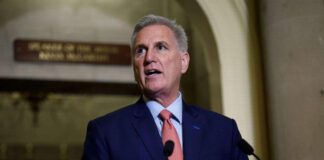NOVEMBER 18, 2022

CEOs have turned into chief hypocrisy officers: running multiple businesses, sitting on boards, and juggling side hustles while demanding total and complete attention from their employees. Rachel Mendelson/Insider
What does Elon Musk do all day?
That may seem like a simple question: He works. Musk is the CEO of three companies: SpaceX, Tesla, and, of course, Twitter. He also is involved in numerous other projects including The Boring Company and Neuralink, both of which he founded, and until June he served on the board of directors for the media company Endeavor, which owns the Ultimate Fighting Championship. To balance all of these tasks, Musk claims that he is working 120 hours a week and that his grueling routine is: “Go to sleep, I wake up, work, go to sleep, work, do that seven days a week.” But all of this prompts the question: What does he actually do all day?
It’s clear based on multiple reports that Musk is doing something — even if it is mostly tweeting random thoughts, hounding his reports for features that actively degrade the quality of Twitter’s core product, or firing employees who criticize him. Less clear is how much value Musk actually adds to the companies he oversees — he’s even driven away other executives who were more directly managing his companies’ end products. But like many CEOs, he’s accumulated a huge fortune by juggling several companies and directorships at once. But with so many roles and no one to answer to, Musk could say he works 24 hours a day — it would be nearly impossible to disprove him.
While Musk may be an extreme case, he’s also the perfect example of the modern CEO: a chaotic blend of unproductive micromanagement and highly paid absenteeism. Being the “chief executive” is meant to be the highest position in the organization — the person who is ultimately responsible for everything in the company — and yet the modern executive is someone who deliberately takes on multiple roles, directorships, book deals, and speaking arrangements. As the executive of a boutique tech public-relations firm, I am tired of the chief hypocrisy officers who claim that people “aren’t working hard enough” as they reap the benefits of multiple jobs and roles. Instead of seeing the role of a chief executive as one ultimately responsible for the successes and failures of a company, it has become a personality-driven stepping stone to elevate the brand and likeness of one well-paid individual
What is a CEO supposed to do?
A great CEO is one who is able to stand for the company’s values and execute “big picture” ideas, but also someone who actually contributes to the company on a meaningful level. The idea of a CEO first popped up in the early 1910s, and many of the first chief executives were directly involved in the nitty-gritty of their companies: pay bands, employee hours, and specific product processes. As companies got larger, the role of the CEO became a little more macro-oriented — bigger strategic and deal-making calls rather than day-to-day operations — but ultimately responsible (and held accountable) for the end result. CEOs continued to generally work their way up into the position and stay enmeshed in the culture, while keeping a broader eye across various levels of product and management. But by the 1970s and 1980s, a crop of “superstar” CEOs transformed the job again. Instead of having their value tied to direct performance of the company — the quality of the products, the happiness of the employees, the value they created — modern CEOs began to be defined only by their ability to keep the stock price afloat and investors happy. They became the public face of the firm, signed book deals, did interviews, and spent less time focusing on their company’s product. Not coincidentally, this is also when CEO pay started to drastically diverge from that of the average employee.
But studies have shown that the growth of the CEO as a public face and detached manager rather than a deep part of the organization is actually a negative for the value of the company — and it’s not surprising given how far removed many CEOs have gotten from the purpose of their roles.
A good CEO does have a lot of roles — they are a sales representative, a recruiter, a fundraiser, and a morale booster — but they are all in service of the company’s goals rather than their own pay package. They’re able to balance hands-on management with clear delegation that makes subordinates confident the CEO understands the task and why the deputy in question is the right person to execute it. Their value is based on morale, customer satisfaction, funding, and execution, rather than their own status and income.
What does a CEO actually do?
Nowadays corporate CEOs do less of this actual value driving and instead spend most of their day vaguely fluttering between meetings and dashing out inspirational tweets. A study by researchers at Harvard tracked some of these top executives during their daily routines in an attempt to break down “what a CEO really does all day.” And while the study grouped each activity into impressive-sounding categories like “people and relationships” and “business unit reviews,” looking under the hood there wasn’t a whole lot going on. The study and others like it are supposed to glorify an executive class that rarely has to justify its existence, benefitting operators — people who are “doing a lot of stuff” without being evaluated for it — and glorifying the idea of busywork over execution. The most obvious example of this is that executives spend 72% of their day in “meetings” with no evaluation of what these meetings are or whom they benefit. In fact, the CEOs in the Harvard study even acknowledged that most of their meetings could be half the time and that these gatherings were taking up overlong chunks of their day.
In the extreme, some CEOs like Musk have taken on the management of multiple large companies. Jack Dorsey famously ran both Twitter and Square on an iPad. Before being charged with fraud in Japan, Carlos Ghosn ran two massive auto manufacturers: Renault and Nissan. Even Steve Jobs ran Apple and Pixar at the same time. If executives have the time to do two “full time” roles, then either they are failing to contribute enough to the roles they’re participating in or their roles aren’t onerous enough to require one’s full attention. And yet they receive an outsize amount of pay based on their perceived market power rather than the true value added.
In theory, the company’s board of directors is supposed to rein in the CEO, acting as an independent accountability mechanism to make sure the best interests of workers, shareholders, and customers are taken into account. But in reality, many of these boards have conflicts of interests and little actual connection to the underlying businesses they’re supposed to be overseeing. A 2013 survey by the consulting firm McKinsey found that just 16% of board members said they had a working understanding of the company’s industry and another 2014 survey found that a plurality of executives and even board members themselves cited the board of directors as the primary reason that businesses were focused on short-term results instead of real growth. And yet, many of these same board members are CEOs of other firms and rack up sizable paychecks rubber stamping their executive brethren’s decisions. Take, for instance, the board of directors at Tesla, which is embroiled in a shareholder lawsuit over a pay package set up for Musk in 2018 that ended up being worth roughly $56 billion. Two of the longtime board members who helped approve the package — James Murdoch, the former CEO of 21st Century Fox, and Antonio Gracias, the CEO of the investment firm Valor Equity Partners — said that they were longtime friends and had taken family vacations with Musk. Another board member, Ira Ehrenpreis, who was in charge of the compensation committee that determined the pay package, said: “We never had the kind of relationship with Elon where he was punching the clock.”
One job for thee, many for me
But there’s nowhere that more clearly shows the distorted reality of the modern CEO than the hypocrisy of how they are treated compared with the frontline worker.
Take the ginned-up “overemployment” controversy: a fake scare campaign around people having “two jobs while working remote.” The most viral of these complaints came from the CEO of a midsize tech company who fired two employees holding down multiple jobs. In a LinkedIn post about the firing he complained that people taking on two full-time roles was a scourge on businesses: “It’s a new form of theft and deception, and not something in which an ethical, honest person would participate.” While it’s unclear exactly how many average people are “overemployed,” many CEOs constantly juggle businesses, board seats, and other ventures. And instead of facing criticism or termination, they’re greeted as world conquerors and paid more than 300 times what their average employee makes.
This hypocrisy also popped up as part of the “quiet quitting” meme. The guilt-trip around quiet quitting focused on someone doing “the bare minimum to get by,” but that accurately describes many CEOs. Executives are extremely quick to judge and enumerate the work of those below them, but it’s fair to say that the actual job expectations and deliverables of the chief executive are specious at best.
And even when executives do make strategic or product-based decisions, they often dodge significant consequences for their failures. The CEO of the online mortgage platform Better drove the company into a terrible financial situation and then fired 900 people in a Zoom call (after referring to his employees in an email as a “bunch of dumb dolphins”) yet remains on top there. Mark Zuckerberg’s unprofitable metaverse push might wreck Facebook and was a big reason behind Meta’s decision to slash 11,000 people’s jobs, and yet he will see no meaningful consequences. Even when a CEO offers a sincere apology for mass layoffs, as was the case with the payments startup Stripe, the failure to properly scale the company is proof positive that the CEO has failed in their most important responsibility. If an average worker failed to anticipate future needs of their team, mishandled company resources, and negatively affected the employment of their colleagues, they would summarily be fired, but for CEOs there is little accountability. This is the one thing these CEOs are supposed to be doing — making high-level decisions on the direction of the company — they’re clearly failing.
And when they do get involved in the nitty-gritty details, it’s usually on some flight of fancy — like Zuckerberg’s obsession with adding legs to his metaverse avatar or Elon Musk’s fascination with what “verified” means. The irony is that despite the extremely visible ways in which executives get involved in these minor details, they betray a lack of understanding of the company, focusing on a single tree in a forest that’s on fire.
Make CEOs valuable again
I am, however, not arguing that every executive is useless. Specifically within technology, there are a great deal of working technical executives who dedicate themselves to coding or closing significant partnerships, and I work with many of them every day. At my own company, I’ve always tried to work more than the people below me as a measure of respect. As CEO, I must lead by example and am ultimately responsible for the majority of the work. I have always seen the concept of having the company in my hands not as a power but as a responsibility that I must be aware of at all times because if I fail, everybody else does.
The problem comes when companies become too large and the executives in question become too distanced from their product. Elon Musk doesn’t really “get” Twitter: He uses it from the perspective of someone with over 100 million followers. The result is an executive who is focused on solving nonexistent problems to please nobody. Twitter, Tesla, and SpaceX would be better off with a CEO who has a clear vision for the respective products, active engagement with the creation of those products, and the willingness to collaborate with frontline employees to achieve those goals. And Musk isn’t the only executive who would be better served focusing on one task.
There are some signs that a return to a more responsible CEO could happen. For one thing, more companies are restricting the number of outside boards that their CEOs can serve on or barring them from doing so entirely. But there can be other steps too: Force the CEO to log how much time they are devoting to outside projects, appoint employees to the board to directly weigh in on executive pay and performance, and demand that CEOs prove their value beyond cherry-picked share-price metrics.
While it’s tempting to fall for the alluring stories of the workaholic executive, one must question whether it’s really possible to work that many hours and lead that many initiatives. It may seem impressive on the surface that someone can run a company, sit on outside boards, and also have several philanthropic efforts, but it’s also fair to ask whether one person can contribute meaningfully to so many things at once. That’s the core of what’s truly missing from our modern executives: a deep, meaningful connection to the work and the employees who enrich them.
Courtesy/Source: The post appeared originally on Business Insider










































































































